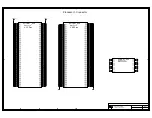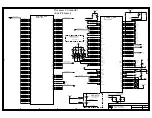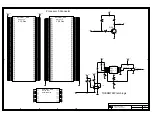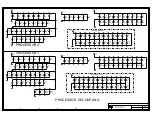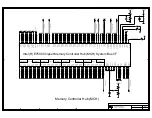
Design Guide
217
Layout Checklist
LAN Interface
General
Guidelines
•
Traces: 5 mils wide, 10 mil spacing.
•
Refer to
•
LAN Max Trace Length ICH3-S to CNR:
L = 3" to 9" (0.5" to 3" on card).
•
To meet timing requirements.
•
Stubs due to R-pak CNR/LOM stuffing option
should not be present.
•
To minimize inductance.
•
Maximum Trace Lengths:
– ICH3-S to 82562EH: L = 4.5" to 10"
– 82562ET: L = 3.5" to 10"
– 82562EM: L = 3.5" to 10".
•
To meet timing requirements.
•
Maximum mismatch between the length of a
clock trace and the length of any data trace
is 0.5" (clock must be the longest trace).
•
To meet timing and signal quality
requirements.
•
Maintain constant symmetry and spacing
between the traces within a differential pair
out of the LAN phy.
•
To meet timing and signal quality
requirements.
•
Keep the total length of each differential pair
under 4".
•
Issues found with traces longer
than 4":
– IEEE phy conformance
failures
– excessive EMI and or
degraded receive BER.
•
Do not route the transmit differential traces
closer than 100 mils to the receive
differential traces.
•
To minimize crosstalk.
•
Distance between differential traces and any
other signal line must be at least 100 mils.
(300 mils recommended).
•
To minimize crosstalk.
•
Route 5 mils on 7 mils for differential pairs
(out of LAN phy).
•
To meet timing and signal quality
requirements.
•
Differential trace impedance should be
controlled to be ~100
Ω
.
•
To meet timing and signal quality
requirements.
•
For high-speed signals, the number of
corners and vias should be kept to a
minimum. If a 90-degree bend is required,
use two 45-degree bends.
•
To meet timing and signal quality
requirements.
•
Traces should be routed away from board
edges by a distance greater than the trace
height above the ground plane.
•
This allows the field around the
trace to couple more easily to the
ground plane rather than to
adjacent wires or boards.
•
Do not route traces and vias under crystals
or oscillators.
•
This prevents coupling to or from
the clock.
•
Trace width to height ratio above the ground
plane should be between 1:1 and 3:1.
•
To control trace EMI radiation.
•
Traces between decoupling and I/O filter
capacitors should be as short and wide as
practical.
•
Long and thin lines are more
inductive and would reduce the
intended effect of decoupling
capacitors.
Table 14-3. Intel
®
ICH3-S Layout Checklist (Sheet 2 of 4)
Checklist Items
Recommendations
Comments
Summary of Contents for Xeon
Page 24: ...Introduction 24 Design Guide This page is intentionally left blank ...
Page 30: ...Component Quadrant Layout 30 Design Guide This page is intentionally left blank ...
Page 52: ...Platform Clock Routing Guidelines 52 Design Guide This page is intentionally left blank ...
Page 66: ...System Bus Routing Guidelines 66 Design Guide This page is intentionally left blank ...
Page 118: ...Intel 82870P2 P64H2 118 Design Guide This page is intentionally left blank ...
Page 146: ...I O Controller Hub 146 Design Guide This page is intentionally left blank ...
Page 148: ...Debug Port 148 Design Guide This page is intentionally left blank ...
Page 210: ...Schematic Checklist 210 Design Guide This page is intentionally left blank ...
Page 220: ...Layout Checklist 220 Design Guide This page is intentionally left blank ...
Page 222: ...Schematics 222 Design Guide This page is intentionally left blank ...

























